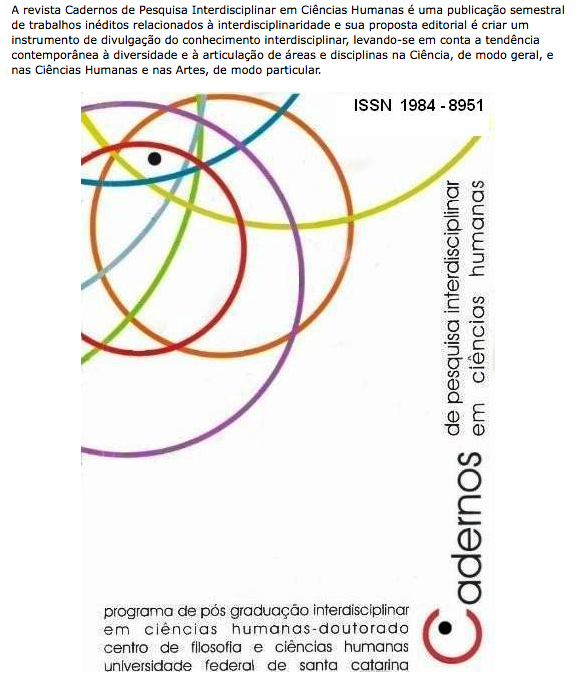The antropological structures of the imaginary by Gilbert Durand on five Arcimboldo's paintings
DOI:
https://doi.org/10.5007/1984-8951.2012v13n102p224Abstract
This is the part of a study aimed at investigating the imagery in the work of Giuseppe Arcimboldo, a sixteenth-century Italian artist who is catching people´s attention, today, because of his optical illusions. In this work, the objective is to provide reflections on five of his works based on the structures of the imaginary, according to Gilbert Durand. It was possible to identify the presence of images related to the daytime regime, which represents the paternal responsibility, aspects of rationality and rise. And also, the nocturnal regime that refers to the cycles of nature, the mother, the eternal feminine, the descent and depth, with emphasis on the vegetal and nutritive symbolism. Such symbols, which are consonant with the Renaissance imaginary, reappear at a time when it is dominant the daytime symbolism and the imagery reading has distinctive characteristics, although the imaginary transcends spatial and time limits.
Downloads
Published
Issue
Section
License
Esta revista proporciona acesso público a todo seu conteúdo, seguindo o princípio de que tornar gratuito o acesso a pesquisas gera um maior intercâmbio global de conhecimento. Tal acesso está associado a um crescimento da leitura e citação do trabalho de um autor. Para maiores informações sobre esta abordagem, visite Public Knowledge Project, projeto que desenvolveu este sistema para melhorar a qualidade acadêmica e pública da pesquisa, distribuindo o OJS assim como outros software de apoio ao sistema de publicação de acesso público a fontes acadêmicas. Os nomes e endereços de e-mail neste site serão usados exclusivamente para os propósitos da revista, não estando disponíveis para outros fins. This journal provides open access to all of it content on the principle that making research freely available to the public supports a greater global exchange of knowledge. Such access is associated with increased readership and increased citation of an author's work. For more information on this approach, see the Public Knowledge Project, which has designed this system to improve the scholarly and public quality of research, and which freely distributes the journal system as well as other software to support the open access publishing of scholarly resources. The names and email addresses entered in this journal site will be used exclusively for the stated purposes of this journal and will not be made available for any other purpose or to any other party. 
Esta obra está licenciada sob uma Licença Creative Commons
.



